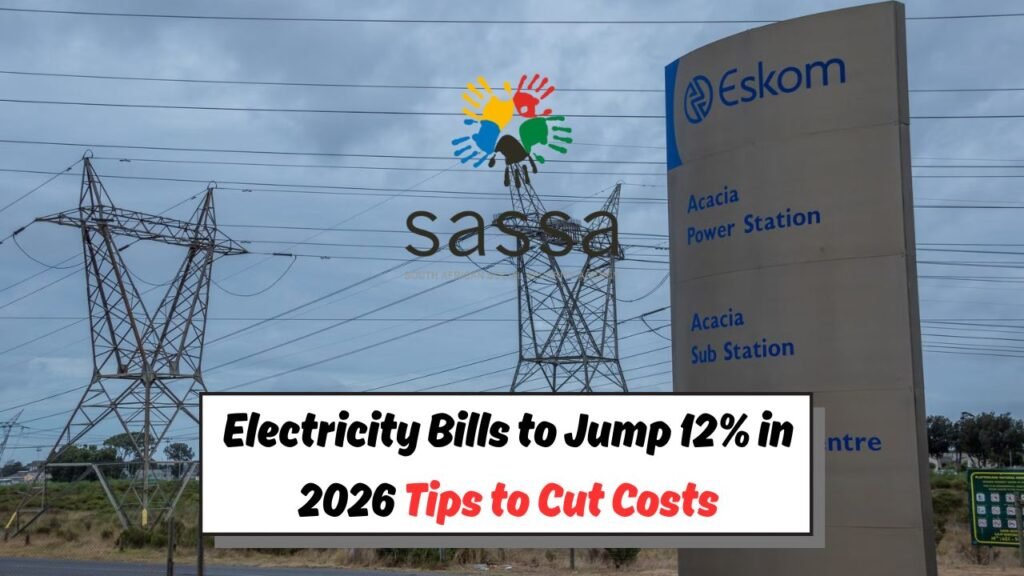Electricity Tariff Hike in 2026: South Africans are bracing themselves for a significant change in their monthly electricity bills as a 12% tariff hike is set to take effect in 2026. This increase will undoubtedly impact households and businesses across the nation, prompting a need for strategic adjustments to manage rising costs effectively. With energy being a crucial part of daily life and the operational backbone for industries, understanding how to navigate these changes is essential. South Africans are encouraged to explore innovative ways to reduce energy consumption and optimize usage, ensuring that they can maintain financial stability despite the looming increase in electricity costs.

Understanding the 2026 Electricity Tariff Increase
The upcoming 12% electricity tariff hike planned for 2026 is a result of ongoing pressures on the national grid and the need for infrastructure upgrades. The country’s electricity provider has cited the necessity of this increase to ensure reliable energy supply and to finance the critical maintenance and expansion of energy facilities. For many South Africans, this translates to a significant rise in monthly utility expenses, which could strain household budgets and business operations. Understanding the factors driving this increase is crucial for consumers to prepare adequately. South Africans should be aware that this is part of a broader strategy to stabilize the power supply and reduce load shedding, a pervasive issue that has plagued the nation. By investing in infrastructure and technology, the aim is to create a more resilient and efficient energy sector, ultimately benefiting consumers in the long run. However, in the short term, consumers must adopt strategies to mitigate the immediate financial impacts of this hike.
Strategies to Manage Rising Electricity Costs in South Africa
As the 12% electricity tariff hike looms on the horizon, South Africans are exploring various strategies to manage the impending rise in costs. One effective approach is investing in energy-efficient appliances which consume less electricity and can significantly lower utility bills over time. Additionally, adopting solar energy solutions has become increasingly popular, with many households and businesses installing solar panels to harness the abundant South African sunshine. Not only does this reduce reliance on the national grid, but it also provides a sustainable and cost-effective alternative energy source. Moreover, energy conservation practices such as turning off unused appliances, using LED lighting, and optimizing heating and cooling systems can lead to substantial savings. By implementing these strategies, South Africans can mitigate the financial impact of the tariff increase while contributing to a more sustainable future.
Long-Term Benefits of Energy Efficiency Amid Tariff Hikes
While the immediate concern for many is the 2026 electricity tariff hike, the long-term benefits of adopting energy-efficient practices cannot be overstated. Energy efficiency not only reduces electricity bills but also enhances the overall quality of life and environmental sustainability. By reducing energy consumption, South Africans can lessen their carbon footprint and contribute to the global effort against climate change. This move towards sustainability is becoming increasingly important as the world faces growing environmental challenges. Furthermore, energy efficiency can increase the value of properties, as homes equipped with renewable energy sources and energy-saving features are more attractive to buyers. For businesses, reducing energy costs can lead to increased profitability and competitiveness in the market. Embracing energy efficiency now can provide significant advantages in the future, making the initial investment worthwhile in the face of rising tariffs.
 Want to Claim R12,500 Cash for Youth? Ensure You're Eligible Before Applications Open on August 20!
Want to Claim R12,500 Cash for Youth? Ensure You're Eligible Before Applications Open on August 20!
Government and Community Initiatives to Support Energy Transition
The South African government and various community organizations are actively working to support the transition to more sustainable energy solutions in light of the impending tariff hike. Initiatives such as subsidies for solar panel installations and energy-efficient appliances are designed to alleviate some of the financial burdens on consumers. Additionally, educational campaigns are being launched to raise awareness about energy conservation and the benefits of renewable energy sources. By empowering individuals and businesses with knowledge and resources, these initiatives aim to foster a culture of sustainability and resilience. Community-based projects are also emerging, where neighborhoods collaborate to install shared solar systems and implement collective energy-saving programs. These efforts not only help reduce individual costs but also strengthen community ties and promote a shared responsibility towards a sustainable future. As South Africa prepares for the 2026 tariff increase, these government and community initiatives play a crucial role in supporting the energy transition and ensuring that all South Africans can adapt to the changing energy landscape.


